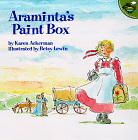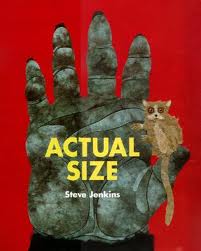Books in the Math Program
![]()
This article by Carol Otis Hurst first appeared in the July 1996 Issue of Carol Hurst's Children's Literature Newsletter.
![]()
Teachers have long included counting books and some of Tana Hoban's geometric photography books in the math center but the idea that many other good books with strong literary quality have strong math content or can be extended into math activities is new to some of us. First, a few words of caution. We're not saying that you can and should teach math only through books. We're also not saying that you should drag any and all books into the math program. Any book can be bent out of shape and twisted into lessons for all sorts of subjects, including math, but we're not talking here about destroying a book to make it fit a given lesson and we're not talking about abandoning manipulatives and math books. We're talking about blurring the edges of math and literature and letting children play with math concepts without destroying the work of literature that can lead to those concepts or extend them.
Let's look at a few well known novels and picture books which can be used with your math program.

Some of us are used to thinking about picture books in this way, so let's start with a novel instead. Tuck Everlasting by Natalie Babbitt is a beautiful fantasy that has long delighted readers. The Tuck family has inadvertently drunk from a spring and gained the ability to live unchanging physically forever. While others might think this would be wonderful, the Tucks know the unhappiness and tragedy that results when the natural order of things is altered.
After reading Tuck Everlasting and dwelling on the problems and the incredibly beautiful writing therein, students might like to think exponentially about living forever. What would happen, for instance, if this generation of twelve year olds were to live forever? What would the population of the world be in twenty years, forty years and eighty years? If they stayed as twelve year olds, they probably would not have children, but if they froze at their own ideal age (and discussions of what and why that age would be could go on for a long time), what would that do to world cultures and problems?
Looking at life cycles is another area of math and pattern investigation and discussion stemming from Tuck Everlasting. What's the life cycle of humans in today's world? What's the age gap between generations? What was it thirty years ago? How long is each stage in life today: infancy, childhood, working age, retirement age, total life span? See our Featured Book Teachers' Guide for Tuck Everlasting with discussion starters, activities, related books and links.
Another novel with possible math extensions is Paul Fleischman's wonderful book Bull Run. Here we have short chapters from sixteen different points of view as people march toward the coming Civil War battle and, later, react to its horrors. The book makes a wonderful source for Reader's Theater as the short chapters are easily mastered by readers of varying skills and the performance can be quite affecting.
The mathematics activities that could emanate from Bull Run could be data gathering and analyzing the information about and from the characters, a look at the statistics of the battle: numbers of soldiers, casualties, and weaponry. Calculation of the food supply and transportation necessary to get both armies to that place for that time might come next. Research into the weaponry used at the time and the range of fire and kind of damage possible is another math and historical activity.

Turning next to a picture book, take a look at Karen Ackerman and Betsy Lewin's book, Araminta's Paint Box in which a little girl and her family travel by covered wagon to California and, on the way, she loses a treasured paint box. The paint box undergoes many transformations as it is passed from user to user but it also gets to California and, wonder of wonders, gets back into Araminta's possession. We can use some maps to trace both routes and calculate the mileage of Araminta and of the paint box. We can estimate the time it must have taken for both trips then and what it would take now. This book begs the question, "What are the odds of the two ending up in the same place at the same time?" Of course, those odds are impossible to estimate accurately but it leads to a discussion of how odds are calculated and hands on activities using counters and random selection to check odds prediction.
To bring the literature/math connection to the youngest readers we can use Hattie and the Fox by Mem Fox and Patricia Mullins. Enjoy the repetitive, cumulative action together. Predict what the disdainful animals will do and say when they finally notice the fox. Spend some time appreciating the pictures and the torn tissue paper than Mullins used to create her amazingly detailed illustrations and then wander into the math content through that cumulative pattern. By putting each of the phrases on sentence strips, children can color key them according to the patterns they identify.
Hattie, though she certainly doesn't know it, is using data gathering as, bit by bit, the fox is revealed to her. You can organize her findings into a data chart. When the fox is identified, Hattie flies up into a tree. Many children don't realize that chickens can fly and estimating the distance she flew in the story can lead to measurement activities as children discover how far a full grown hen can fly and compare that flight to other fowl.
Our book Picturing Math, available through SRA/McGraw-Hill (Order through Amazon.com.), uses many more and different books than these to integrate math with picture books in grades Pre-K-2. If you're interested in bringing literature into the math program and vice versa, this book is for you. In the first section we take 50 picture books and provide a short summary and activities for various age levels and math concepts. Section two is a chart listing 211 picture books indicating which of 14 different math concepts they can best be used with. In the last section we address twelve math concepts in depth providing activities which strengthen these concepts which can be used with many different picture books. 152 pages. Item no. 0-02-687367-2. To order call 1-800-843-8855. Or email rebecca@carolhurst.com for more information.

New Books since this article was written
 Actual Size by Steve Jenkins. (2004, Houghton. ISBN 0618375945. Order Info.) Nonfiction Picture Book. 28 pages. Gr PreK-3.
Actual Size by Steve Jenkins. (2004, Houghton. ISBN 0618375945. Order Info.) Nonfiction Picture Book. 28 pages. Gr PreK-3.
This outstanding nonfiction title is another of many wonderful books by Steve Jenkins. His torn paper illustrations created with handmade papers are exquisite and very engaging. In this title animals or parts of animals are shown life size. The eye of a giant squid fills a page and, believe it or not, is beautifully rendered with textured papers. Read More.
Use the life size illustrations in this book to take measurements and add them, find the differences, convert to other units and other computation exercises.
![]()
Related Areas of This Site
- Math and Children's Literature
- Featured Book Teachers' Guide for Tuck Everlasting with discussion starters, activities, related books and links.
Advertisement:
Advertisement:
Advertisement:

